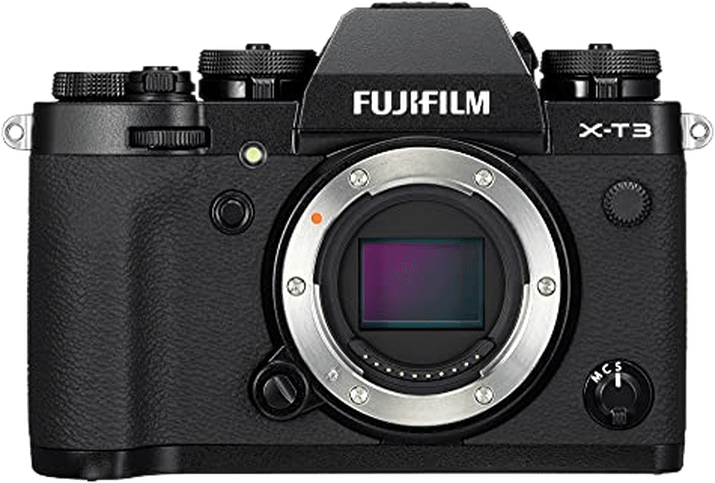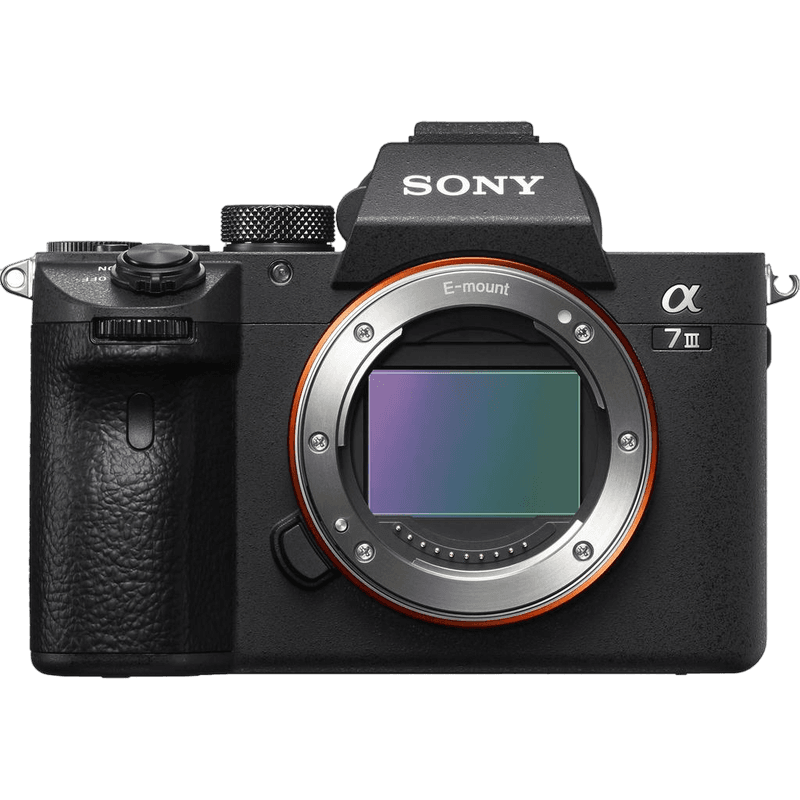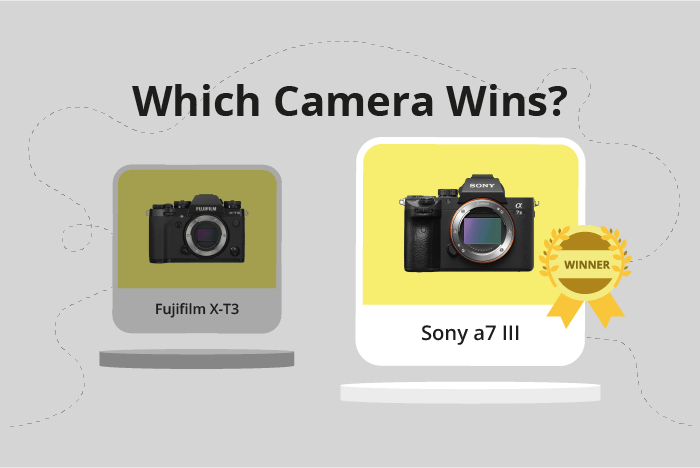Fujifilm X-T3 vs Sony a7 III Comparison
Fujifilm X-T3

Sony a7 III

The Sony a7 III comes out as the winner with a score of 81, while the Fujifilm X-T3 trails behind with a score of 72/100. Both cameras are mirrorless and were released in 2018, with the Fujifilm X-T3 being announced on September 6th and the Sony a7 III on February 27th.
In terms of size, the Fujifilm X-T3 is slightly smaller and lighter, measuring 133 x 93 x 59mm and weighing 539g. The Sony a7 III, on the other hand, measures 127 x 96 x 74mm and weighs 650g. Despite this, the Sony a7 III still manages to outperform the Fujifilm X-T3 in terms of overall quality and features, which is reflected in its higher score.
In the end, the Sony a7 III proves to be a better camera with its higher score, but the Fujifilm X-T3’s lower price point and lighter weight make it a strong contender for those looking for a more budget-friendly option.
Fujifilm X-T3 vs Sony a7 III Overview and Optics
The Sony a7 III outperforms the Fujifilm X-T3 in optics, scoring 81/100 compared to the X-T3’s 67/100. Both cameras share some common specifications such as a CMOS sensor and lens mounts specific to their respective brands, Fujifilm X for the X-T3 and Sony FE for the a7 III. The differences in their performance are due to various factors.
The Sony a7 III has a full-frame sensor, which is larger than the X-T3’s APS-C sensor. This larger sensor size allows the a7 III to capture more light, resulting in better image quality, especially in low-light conditions. Additionally, the a7 III has built-in image stabilization, making it easier to capture sharp images in challenging situations. The DXOMARK score for the a7 III’s sensor is 96, further confirming its superior image quality. However, it is important to note that DXOMARK does not score Fujifilm cameras.
On the other hand, the Fujifilm X-T3 has a higher megapixel count of 26, compared to the a7 III’s 24.2. This allows the X-T3 to capture more detailed images. The X-T3 also has a faster shooting speed at 20 frames per second, which is twice as fast as the a7 III’s 10 frames per second. This makes the X-T3 more suitable for action and sports photography.
To conclude, the Sony a7 III is the clear winner in terms of optics due to its larger sensor size, image stabilization, and higher DXOMARK score. However, the Fujifilm X-T3 has its advantages, such as a higher megapixel count and faster shooting speed, making it suitable for specific photography needs. Ultimately, the choice between these two cameras depends on the individual’s requirements and preferences.
Fujifilm X-T3 vs Sony a7 III Video Performance
The Fujifilm X-T3 outperforms the Sony a7 III in video capabilities with a score of 83 compared to 70. Both cameras share 4K maximum video resolution, but the Fujifilm X-T3 has an edge with its superior maximum video dimensions of 4096 x 2160, while the Sony a7 III offers 3840 x 2160.
The Fujifilm X-T3 also boasts a higher maximum video frame rate of 60fps, double that of the Sony a7 III’s 30fps. This higher frame rate allows for smoother video playback and enables users to capture fast-moving subjects with greater clarity.
While the Sony a7 III falls short in these areas, it is still a capable camera for video recording, offering 4K resolution and a solid 30fps frame rate. However, it does not outshine the Fujifilm X-T3 in any specific video-related aspect.
The Fujifilm X-T3 clearly outshines the Sony a7 III in video capabilities, making it the better choice for videographers and those looking for high-quality video recording. With its higher maximum video dimensions and faster frame rate, the Fujifilm X-T3 is the more versatile and powerful option for video recording. On the other hand, while the Sony a7 III offers decent video capabilities, it does not excel in any particular area when compared to the Fujifilm X-T3.
Fujifilm X-T3 vs Sony a7 III Features and Benefits
The Fujifilm X-T3 outperforms the Sony a7 III with a feature score of 83/100, as opposed to Sony’s 81/100. Both cameras share several similarities, including a 3-inch screen size, touchscreen capabilities, flip screens, and the absence of GPS. Additionally, both cameras come equipped with WIFI and Bluetooth connectivity.
The Fujifilm X-T3 boasts a higher screen resolution of 1,040,000 dots, compared to the Sony a7 III’s 921,600 dots. This difference provides the X-T3 with a sharper and clearer display, enhancing the user experience during shooting and playback. The X-T3’s superior screen resolution contributes to its higher feature score.
Despite its lower feature score, the Sony a7 III offers advantages of its own. Although the specific benefits are not provided in the given information, the camera’s overall performance may excel in other aspects, such as autofocus, battery life, or image quality. However, based on the provided specifications, the Fujifilm X-T3 takes the lead in terms of features.
Taking these factors into account, the Fujifilm X-T3 emerges as the winner in the feature comparison. Its higher feature score and superior screen resolution offer a better user experience. However, potential buyers should consider other aspects of the cameras, such as image quality and performance, to make an informed decision.
Fujifilm X-T3 vs Sony a7 III Storage and Battery
The Fujifilm X-T3 and Sony a7 III both score 68/100 for storage and battery. They share similarities such as having two memory card slots and accepting SD, SDHC, and SDXC cards. However, the Sony a7 III also supports Memory Stick Duo, Pro Duo, and Pro-HG Duo cards, providing more options for users.
The Fujifilm X-T3 has a battery life of 390 shots, significantly less than the Sony a7 III, which boasts 750 shots. This makes the Sony a7 III more suitable for longer shooting sessions. Both cameras provide ample storage options, with the Sony a7 III offering additional memory card compatibility.
Fujifilm X-T3 vs Sony a7 III – Our Verdict
Are you still undecided about which camera is right for you? Have a look at these popular comparisons that feature the Fujifilm X-T3 or the Sony a7 III:

